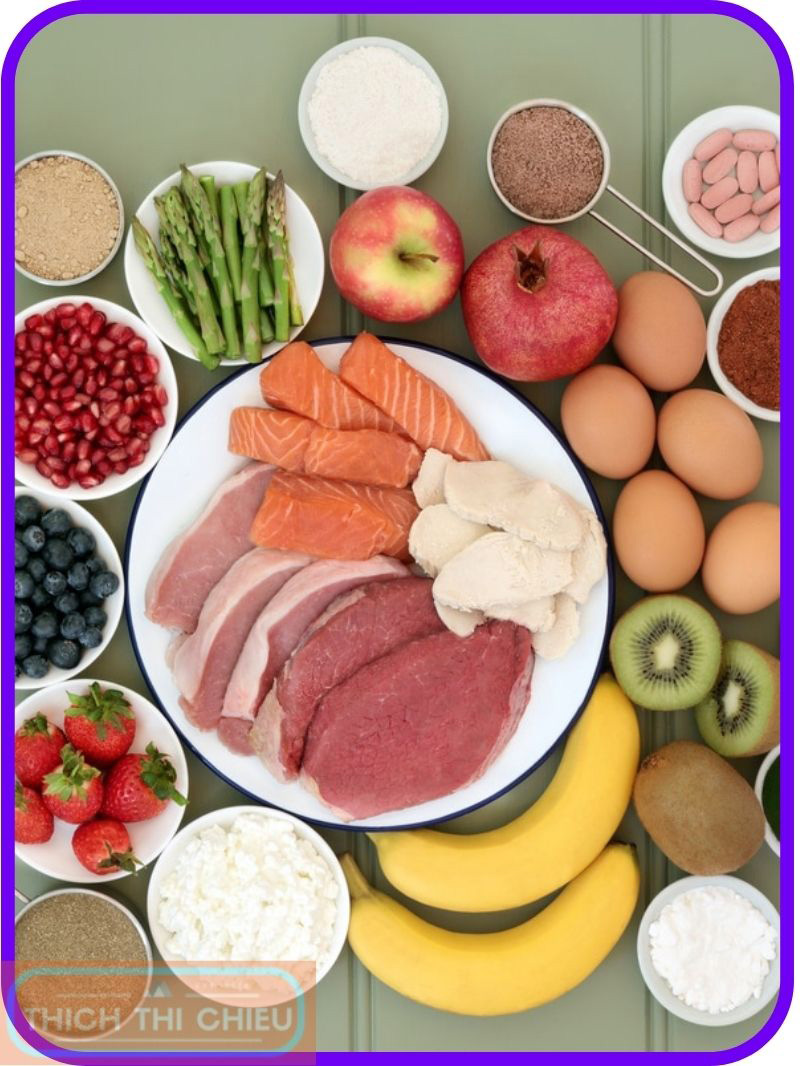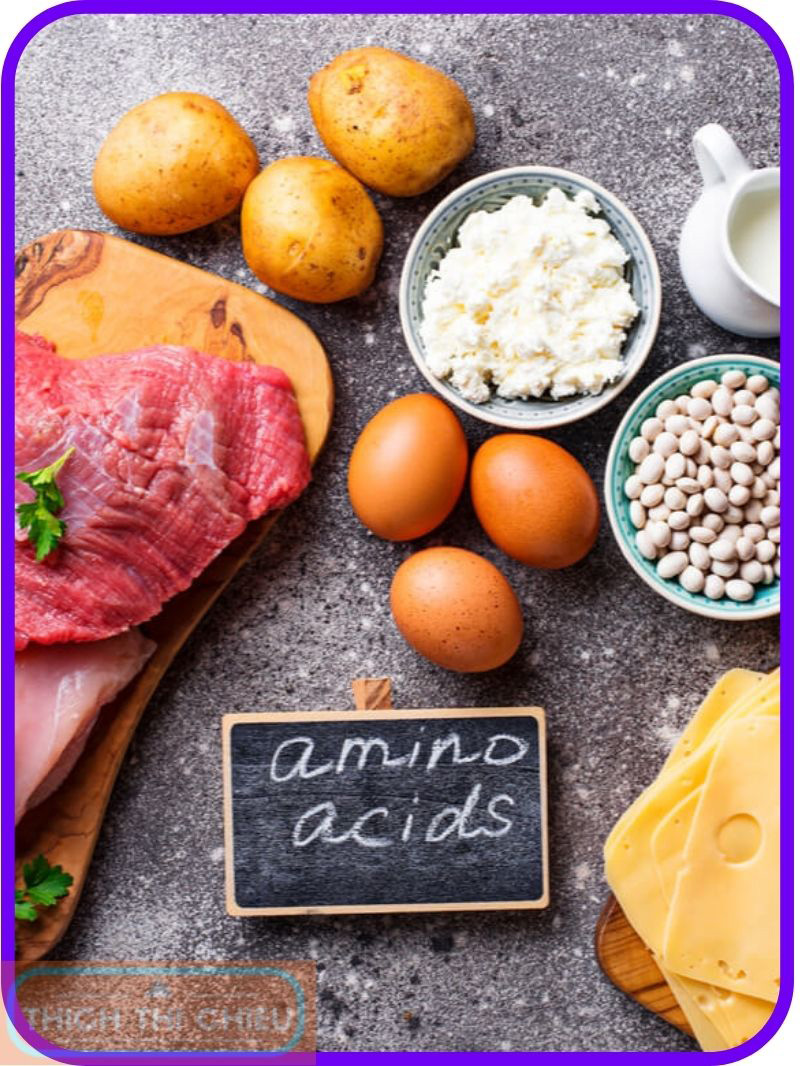Amino acids are the building blocks of proteins, which are essential for life. They play a role in many important bodily functions, such as building and repairing tissues, producing hormones and enzymes, and transporting nutrients throughout the body. Read on to learn more about these fascinating molecules and their essential role in our lives!
Essential Amino Acids

What are essential amino acids?
Essential amino acids are amino acids that cannot be synthesized by the body and must be obtained from food. There are nine essential amino acids for humans: histidine, isoleucine, leucine, lysine, methionine, phenylalanine, threonine, tryptophan, and valine.
Sources of essential amino acids
The best way to get all of the essential amino acids that you need is to eat a variety of healthy foods. Protein-rich foods, such as meat, poultry, fish, eggs, dairy products, legumes, nuts, and seeds, are the best sources of essential amino acids.
Here are some examples of foods that are good sources of essential amino acids:
- Meat and poultry: Beef, chicken, turkey, pork, lamb
- Fish: Salmon, tuna, cod, halibut, mackerel
- Eggs: Eggs are a complete protein, meaning they contain all nine essential amino acids.
- Dairy products: Milk, yogurt, cheese
- Legumes: Beans, lentils, peas
- Nuts and seeds: Almonds, walnuts, cashews, pumpkin seeds, sunflower seeds
Non-Essential Amino Acids
What are non-essential amino acids?
Non-essential amino acids are amino acids that can be synthesized by the body and do not need to be obtained from food. There are eleven non-essential amino acids for humans: alanine, arginine, asparagine, aspartic acid, cysteine, glutamine, glutamic acid, glycine, proline, serine, and tyrosine.
Sources of non-essential amino acids
Non-essential amino acids can be found in a variety of foods, including protein-rich foods, carbohydrates, and fats.
Here are some examples of foods that are good sources of non-essential amino acids:
- Protein-rich foods: Meat, poultry, fish, eggs, dairy products, legumes, nuts, and seeds
- Carbohydrates: Bread, pasta, rice, cereals, fruits, and vegetables
- Fats: Butter, margarine, oil, nuts, and seeds
Conditional Amino Acids
What are conditional amino acids?
Conditional amino acids are amino acids that the body can synthesize under normal conditions, but may become essential under certain conditions, such as illness, stress, or rapid growth. There are six conditional amino acids for humans: arginine, cysteine, glutamine, glycine, proline, and tyrosine.
Sources of conditional amino acids
Conditional amino acids can be found in a variety of foods, including protein-rich foods, carbohydrates, and fats.
Here are some examples of foods that are good sources of conditional amino acids:
- Protein-rich foods: Meat, poultry, fish, eggs, dairy products, legumes, nuts, and seeds
- Carbohydrates: Bread, pasta, rice, cereals, fruits, and vegetables
- Fats: Butter, margarine, oil, nuts, and seeds
Functions of Amino Acids in Detail
Building and repairing tissues
Amino acids are the building blocks of proteins, which are essential for the building and repair of all body tissues, including muscle, skin, hair, and nails. When proteins are damaged, the body breaks them down into amino acids, which are then used to build new proteins.
For example, when you exercise, you damage your muscle fibers. The body then repairs these damaged muscle fibers by using amino acids to build new proteins. This is why it is important to eat protein after exercise to help your muscles recover.
Producing hormones and enzymes
Hormones and enzymes are proteins that play a variety of important roles in the body. Hormones regulate many bodily functions, such as growth, metabolism, and reproduction. Enzymes catalyze chemical reactions in the body.
Amino acids are essential for the production of all hormones and enzymes. For example, the hormone insulin is made up of 51 amino acids. Insulin helps the body to regulate blood sugar levels.
Transporting nutrients throughout the body
Amino acids are also used to transport nutrients throughout the body. For example, the amino acid hemoglobin is found in red blood cells and carries oxygen to the tissues. Other amino acids are used to transport nutrients such as glucose, fatty acids, and vitamins.
Providing energy
Amino acids can also be used as a source of energy when other sources of energy are not available. For example, during starvation, the body breaks down muscle proteins into amino acids, which are then converted into glucose for energy.
Dietary Sources of Amino Acids in Detail
Protein-rich foods
Protein-rich foods are the best sources of amino acids. Protein is made up of amino acids, and the body cannot synthesize all of the amino acids that it needs. Therefore, it is important to eat a variety of protein-rich foods to ensure that you are getting all of the essential amino acids that you need.
Here are some examples of protein-rich foods:
- Animal-based protein sources: Meat, poultry, fish, eggs, dairy products
- Plant-based protein sources: Legumes, nuts, seeds, grains, tofu, tempeh
Animal-based protein sources
Animal-based protein sources are complete proteins, meaning that they contain all nine essential amino acids. Animal-based protein sources are also generally more bioavailable than plant-based protein sources, meaning that the body can absorb them more easily.
Here are some examples of animal-based protein sources:
- Meat: Beef, chicken, turkey, lamb, pork
- Poultry: Chicken, turkey
- Fish: Salmon, tuna, cod, halibut, mackerel
- Eggs: Eggs are a complete protein, meaning they contain all nine essential amino acids.
- Dairy products: Milk, yogurt, cheese
Plant-based protein sources
Plant-based protein sources are incomplete proteins, meaning that they do not contain all nine essential amino acids. However, it is possible to get all of the essential amino acids from a plant-based diet by eating a variety of plant-based protein sources.
Here are some examples of plant-based protein sources:
- Legumes: Beans, lentils, peas
- Nuts: Almonds, walnuts, cashews, pistachios
- Seeds: Pumpkin seeds, sunflower seeds, chia seeds, flax seeds
- Grains: Quinoa, oats, brown rice
- Tofu and tempeh: Tofu and tempeh are made from soybeans and are good sources of protein.
Deficiency of Amino Acids in Detail
Growth retardation
Amino acids are essential for growth and development. A deficiency of amino acids in children can lead to growth retardation. This is because amino acids are needed to build and repair tissues, produce hormones and enzymes, and transport nutrients throughout the body.
Muscle wasting
Amino acids are also essential for muscle maintenance and repair. A deficiency of amino acids can lead to muscle wasting, especially in adults. This is because amino acids are needed to build and repair muscle proteins.
Weaker immune system
Amino acids are also important for the immune system. A deficiency of amino acids can weaken the immune system and make people more susceptible to infections. This is because amino acids are needed to produce white blood cells and other components of the immune system.
Other health problems
A deficiency of amino acids can also lead to a variety of other health problems, including:
- Anemia
- Fatigue
- Skin problems
- Hair loss
- Depression
- Cognitive impairment
Excess of Amino Acids in Detail
Increased risk of kidney stones
An excess of amino acids in the urine can increase the risk of kidney stones. This is because amino acids can crystallize and form stones in the kidneys. The risk of kidney stones is especially high for people who have a history of kidney stones or who have other risk factors for kidney stones, such as dehydration, obesity, and a family history of kidney stones.
Phenylketonuria (PKU)
Phenylketonuria (PKU) is a rare genetic disorder that causes the body to accumulate the amino acid phenylalanine. Phenylalanine can be toxic to the brain and nervous system, especially in infants and children. People with PKU need to follow a strict diet that is low in phenylalanine.
Other health problems associated with excess of amino acids
An excess of amino acids can also lead to a variety of other health problems, including:
- Liver damage
- Gout
- Headaches
- Fatigue
- Nausea and vomiting
- Diarrhea
Causes of excess of amino acids
There are a number of factors that can contribute to an excess of amino acids, including:
- Diet: A diet that is high in protein, especially animal-based protein, can lead to an excess of amino acids in the urine.
- Supplements: Taking amino acid supplements can also lead to an excess of amino acids.
- Medical conditions: Certain medical conditions, such as kidney disease and liver disease, can also lead to an excess of amino acids in the blood.
Treatment for excess of amino acids
The treatment for an excess of amino acids depends on the underlying cause. If an excess of amino acids is caused by a diet that is high in protein, then treatment involves reducing the intake of protein. If an excess of amino acids is caused by taking amino acid supplements, then treatment involves stopping the supplements. If an excess of amino acids is caused by a medical condition, then treatment involves addressing the underlying medical condition.
How to prevent excess of amino acids
The best way to prevent an excess of amino acids is to eat a balanced diet that is not too high in protein. It is also important to avoid taking amino acid supplements unless they are recommended by a doctor.
How to get enough amino acids
The best way to get enough amino acids is to eat a balanced diet that includes a variety of protein-rich foods. Good sources of protein include meat, poultry, fish, eggs, dairy products, legumes, nuts, and seeds.
If you are following a plant-based diet, it is important to combine plant-based protein sources to get all of the essential amino acids that you need. For example, you could eat beans and rice together, or peanut butter and whole-wheat bread together. You may also want to consider taking a multivitamin supplement that contains amino acids.
In summary, amino acids are essential for good health and play a role in many important bodily functions. It is important to get enough amino acids from food or supplements to avoid any health problems. Hopefully, the above article of TTC has provided you with useful information. If you have any questions or concerns, please leave a comment below.





Leave a Reply